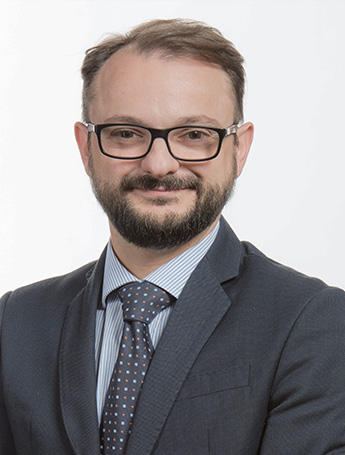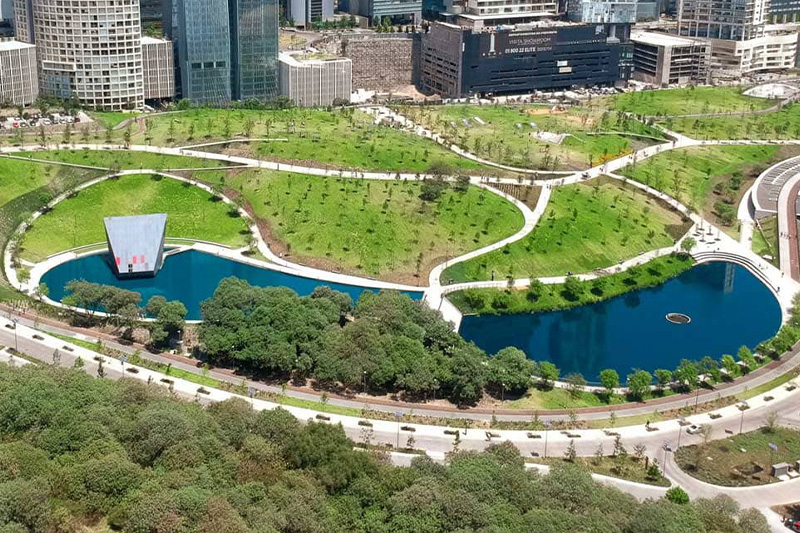The term “smart building” is likely to become the next real estate buzzword.
This term refers to “smart buildings” capable of fostering connectivity by inhabitants and residents, enabling integrated access to new services using digital technology.
To fully assess their impact on citizens, smart buildings need to provide measurable sustainability and well-being results. WiredScore - an international rating system for assessing building digital connectivity was founded in 2013 in New York with the endorsement of former mayor Michael Bloomberg. It provides two certifications WiredScore and SmartScore using scorecards and training programmes to enable real estate companies to measure, improve, communicate and promote the digital connectivity and technology of both existing buildings and those under construction.
William Buttery, Director of Business Development in the Growth Markets team at WiredScore said: “In the three years we have been working with COIMA, we have emphasised the importance of focusing on the outcomes that best-in-class technology can provide. Too often, the real estate industry focuses on the implementation of technology for the sake of it, rather than looking closely at the outcomes this technology can provide for those people living and working in buildings.”

Stefano Corbella – Sustainability Officer, COIMA
A recent Moody’s report found an average 2.2% rental increase in WiredScore Class A certified buildings across North America, demonstrating the return on investment brought about by focusing on technology. This premium can also be considered when looking at 22 COIMA buildings in Italy, including the Porta Romana Olympic Village and many of the Porta Nuova landmark buildings. Speaking of the relationship between COIMA and WiredScore, COIMA’s Sustainability Officer Stefano Corbella, said he was the first Italian to contact this company.
Read also: A district that creates value
“I read about this certification because we had contacts with international investors who told me about it. Sensing its potential, I insisted on being among the first in Italy to have one of our buildings certified with its protocol. This protocol defines a set of technical building criteria which ensure commercial building performance and equipment that can be compared regardless of building location and situation.”
COIMA offices obtained the Wiredscore certification. The next step is for residential buildings to adopt this protocol. These buildings recently became workplaces, requiring professional-level connectivity and digital infrastructure.
Corbella said: “One of the recent consolidating trends concerns connectivity stability and resilience in buildings. This applies to offices, but it is becoming a crucial issue for residential buildings. Developing a residential building that has a stable, fast, resilient connection and can interact with current and future devices is fundamental.”

William Buttery, Director of Business Development
in the Growth Markets team at WiredScore
Buttery said: “WiredScore created scorecards for offices and homes and took some key aspects into consideration. In addition to assessing a building’s resilience to accidental damage and climate change, we focus on readiness for new technologies and connection speed, which is essential for banks, offices, and businesses that cannot afford Internet disconnection and downtime.”
Read also: Connected and inclusive: the features of future cities
Buildings must be sustainable, healthy and equipped with digital technologies. Digital technologies will not just apply in rare cases, but will become widespread because of certifications, such as our SmartScore certification, which sets the industry standard for smart technology. Buttery said: “SmartScore recognises and promotes technologically advanced smart buildings that provide user experiences and services, promote cost efficiency and meet high and ambitious sustainability targets.
SmartScore shares a clear objective with the LEED and WELL certifications: creating a sustainable future where digital technologies play a key role. In addition to LEED and WELL, we are recognised by GRESB, the global ESG benchmark for companies’ real assets. Our WiredScore and SmartScore certifications are in the Performance and Development sections of our scorecards. Recently, we have seen our overall client ratings increase from four to five stars, affording them better financing on their green loans.
Read also: Porta Nuova, the first district designed for the community
Closely analysing the real estate technological set-up, it is appropriate to make a distinction between buildings with little technological content and those that recently have been equipped with Building Management Systems (BMS) that have been integrated and automated to operate with standard logic, without interaction.
Corbella said: “The trend is to increase artificial intelligence in buildings to generate analytics and be more proactive in property management. We are testing a system for BMS buildings that is added to the existing infrastructure and performs a learning phase of the building for the first few months and later interacts with the building once it has learnt how it adapts to changes, exploiting data and information from third-party sources, such as weather forecasts. For example, if a weather event is forecast, the system can start earlier and prepare to react in time. This is a pilot project that we are testing in some properties to measure and understand the benefits and can be applied to the entire sector.”
The next step will be to design buildings that integrate a digital platform of user-facing services. COIMA HT (Human Technology), specialises in the development and integration of digital solutions to enable services dedicated to people's needs, and applies this concept at a district level.
“In Porta Nuova we have systemised a series of buildings that have different asset classes, such as offices, homes and public spaces, and developed the Porta Nuova app, for user interaction and availability of different services. We are updating this app to offer these services not only to those who live and work in this area, but citizens and tourists. We want to change this connection platform into a community platform” Corbella says.
Read also: Investing in the welfare of communities
The theme for the next stage of smart building development is emerging. This involves further linking within a broader fabric of connections and evolving into smart districts (to which emerging Italian energy communities will connect) and smart cities. The Porta Nuova experience shows the importance of designing buildings and their environments, to capitalise on the opportunities made available by technology.
Another step towards a sustainable future, with low environmental impact and measurable results.



